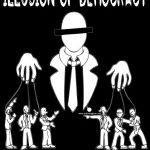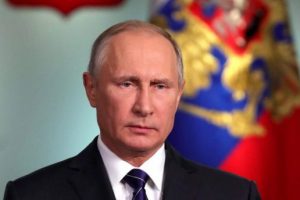 The great October fall of the US dollar is turning into an avalanche. On Tuesday, the American currency lost nine kopeks in Russia and reached a new minimum mark this year – 29.5 rubles per dollar. Within six months (April through September) the dollar lost over 10 percent at the world foreign exchange trading, which marked the sharpest decline since 1991. Some experts believe that the American currency is close to collapse, which may lead to a new financial crisis.
The great October fall of the US dollar is turning into an avalanche. On Tuesday, the American currency lost nine kopeks in Russia and reached a new minimum mark this year – 29.5 rubles per dollar. Within six months (April through September) the dollar lost over 10 percent at the world foreign exchange trading, which marked the sharpest decline since 1991. Some experts believe that the American currency is close to collapse, which may lead to a new financial crisis.
The tendency of the US dollar devaluation has been observed for a few years, but the current rate of decline is unprecedented. Some jokesters even rushed to re-read the letters of Karl Marx to Friedrich Engels written during the US financial panic of 1857 discussing the collapse of America. It would have been funny if it wasn’t so serious.
The chief economist of HSBC Bank Stephen King believes that if the US officials fail to stop the fall of American currency, it may provoke another financial crisis. “A dollar collapse would be a disaster all round… It would leave the international monetary system short of stability and long of fear. It would unleash economic upheavals on a similar scale to those seen in the 1970,” King wrote for The Independent.
American officials don’t seem to be overly concerned since nothing is being done about it. The US hasn’t done anything to support the currency since 1955. But is a collapse inevitable? From the viewpoint of macroeconomic indicators, the US state of affairs is, indeed, scary: record budget deficit of $1.4 trillion, record state debt that now exceeds $11.9 trillion, high unemployment and weak currency. Huge inflows of capital into the economy that Obama is proud of haven’t yet shown results.
But on the other hand, weak currency may be good for the US.
“The economy is supported by industrial orders based on the current weak dollar and higher prices in the future. Key players in the market are ready to support their manufacturers by weakening the currency,” says Alexander Kuptsikevich, FxPro financial analyst.
If the state debt is growing, it means that the US continues to obtain loans.
“Market participants prefer to borrow money in dollars, and dollar loans are relatively affordable. They invest into more active instruments denominated in currencies of developing countries,’ explains Yevgeny Nadorshin, chief economist of Trust Investment Bank.
This causes growth of stock index. For example, Russian Trading System increased by 34 percent within two and a half months.
World center banks, who used to be trusted American partners, also turn their backs to dollar. They reduced investments into assets denominated in American currency. According to Barclays Capital , in April, May, and June, the banks invested 63% of their gains in euro or yen. If it continues, this may lead to further devaluation of dollar.
However, central banks of the countries that depend on export try not to let it happen. For example, last week a group of Asian central banks carried out unprecedented intervention in the financial markets by actively buying American currency. Bank of Russia was not a passive observer either. According to experts’ evaluations, the bank purchased over three billion dollars.
The good thing about it is that it helped Russian manufacturers to maintain competitiveness and bank reserves. The question is whether we would have to spend much more when investors change their minds and flee the Russian market changing their rubles into dollars. Last year we paid a high price for it.
“I’m not afraid that the events of the last year will repeat. The circumstances now are different. The world touched the bottom of the crisis and revival began, so there won’t be sharp moves,” says profile manager of Pilgrim Asset Management Olga Izyumova.
Yevgeniy Nadorshin agrees with her. He also thinks that dollar will continue weakening. But many experts think that as soon as the US announces the raise of interest rates, American currency will stop falling and even start growing. When is it going to happen?
Ben Bernanke, the Chairman of the United States Federal Reserve evades the answer. All he says is that this will happen when the US is sure of stable growth. On Tuesday investors discussed information obtained from the US official sources that the Federal Reserve will start raising interest rates no earlier than the second half of the next year.












Adauga comentariu